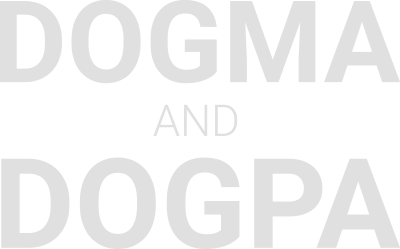DNA is a science that has been increasing since the 1980s. In 1986, DNA testing was used in its first crime scene. Since then, the need for DNA testing has expanded beyond crime scenes and into the general consumer market.
We can find out where our genes originate with companies such as 23&Me, Ancestry, and other DNA testing kits. If we’re able to do all of that for people, surely we must be able to do it for dogs, too, right? We sure do, with a wisdom panel test.
How Does the Test Work?
The Wisdom Panel test is similar to the DNA testing kits we get for humans. The test is done in just a few easy steps:
- Swab the inside of your pet’s mouth for at least 15 seconds.
- Allow the swab to dry for at least 5 minutes before sealing.
- Ship the swab back to the lab.
Once you send your swab to their lab, their scientists will compare your dog’s saliva with samples from other breeds that have been collected for over 20 years. Since dog DNA is so similar, they’ve created a unique genotyping system to help differentiate.
How Accurate is the Test?
The test is 98% accurate because they’ve collected DNA samples from animal breeds for over 20 years. DNA testing is impressive because it gets more accurate when there are more samples to compare, which means that the longer it exists, the more precise it becomes.
Of course, to humans is to error, and you will be the one swabbing your pet’s mouth for DNA. If you want to be sure you get an accurate result, here are a few tips.
- Avoid touching the end of the swab.
- Wait at least 2 hours after feeding your pet to swab.
- Inspect their mouth of any food or debris before swabbing.
Why Do You Have to Wait so Long for the Results?
After you ship the sample back to the lab, it takes about a week for them to receive it, and results take 2-3 weeks after the lab receives your pet’s sample. While at the lab, they work with neogen genomics and have more pet DNA experience than any other lab.
The lab gets over 4,000 samples daily that must be tested and compared to millions of dog breed combinations. When the lab receives the sample, it is inspected to make sure nothing has been compromised and enough saliva has been gathered for the test.
Can the Results Change with Time?
Like human DNA test results can change with time, so can the wisdom panel results. For example, if more people send the lab DNA samples of their pets, then the lab would have more DNA samples to compare pets too.
This means that over time, the DNA of your pet will become more accurate, and with that comes change.
For example, you might get a result that says your dog is 51% one breed, 48.9% another breed, and 0.1% a third breed. Then they have the 3rd breed taken away because it’s more accurate.
Can Dogs from the Same Litter Have Different DNA?
In animals, parents pass 50% of their genetic makeup to their offspring. The other 50% is randomized, meaning dogs in the same litter can have different DNA. This is why puppies from the same litter can be completely different colors.
Even purebred dogs can have a litter of dogs with different DNA, and it’s just that their physical differences aren’t as noticeable. Puppies in the same litter can even have completely different fathers if your female dog mates with multiple males while in heat.
Final Thoughts on Wisdom Panel How Long after DNA Extraction
From DNA’s first use within a crime scene in 1986 to now where the general consumer can buy a test for their dog. With the wisdom panel test, you can see your pet’s genetic makeup, and the wisdom panel test can tell you what breed your dog is and is 98% accurate.
Just swab your pet’s mouth and send the swab back to the lab. After receiving the swab, they’ll test your pet and compare it to millions of DNA samples collected over 20 years. As they get more DNA samples, the tests become more accurate.
More accuracy means that your pet’s results might change over time. Even if your dogs are from the same litter, they can have different DNA, and this is because the parent only passes down 50% of their genetic makeup to their offspring.

